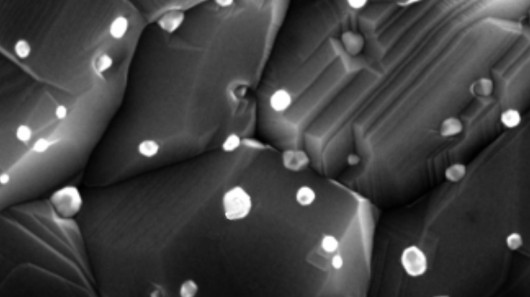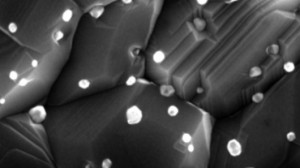Virtually all electrical devices and industrial processes create heat as they operate, which is typically wasted. In the past several years, various thermoelectric technologies have been developed to address that situation, by converting such heat into electricity. The ideal material for the purpose would be one that has a high electrical conductivity, but a low thermal conductivity – that way, it could carry plenty of electricity without losing efficiency through overheating. Unfortunately, electrical and thermal conductivity usually seem to go hand in hand. With some help from an ordinary microwave oven, however, researchers from New York’s Rensselaer Polytechnic Institute have created a nanomaterial that appears to fit the bill.
The team started with zinc oxide, which is already pretty well-suited to heat harvesting, as it is nontoxic, cheap, can have its electrical conductivity boosted, and has a high melting point. It is also, however, fairly thermally conductive.

In collaboration with the University of Wollongong, Australia, the researchers proceeded to add tiny amounts of aluminum to samples of zinc oxide, then processed the two materials together in a microwave oven. The resulting aluminum-doped zinc oxide nanocomposite retained the original zinc’s electrical conductivity, but had a much lower thermal conductivity.
Several grams of the pelletized nanocomposite could be produced in just a few minutes, which is reportedly enough to create a heat-harvesting device several centimeters long. The process is also said to be environmentally-friendly, while also less costly and more scalable than conventional alternatives. It can also be made and then applied to surfaces, unlike other heat-harvesting materials that have to be fabricated directly onto a surface.
“Harvesting waste heat is a very attractive proposition, since we can convert the heat into electricity and use it to power a device – like in a car or a jet – that is creating the heat in the first place” said team leader Professor Ganpati Ramanath. “This would lead to greater efficiency in nearly everything we do and, ultimately, reduce our dependence on fossil fuels.”
Scientists at Northwestern University have also recently had a similar success, with a thermoelectric material that they created by adding nanocrystals of rock salt to lead telluride.
Source: gizmag

 Follow
Follow